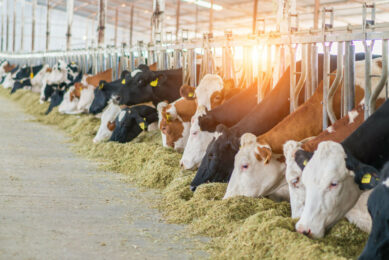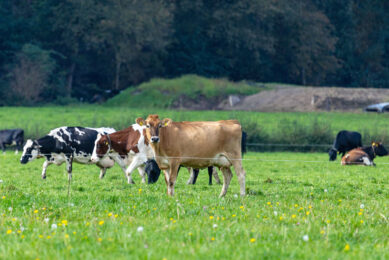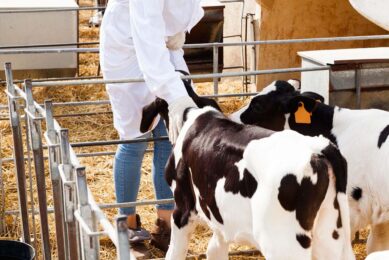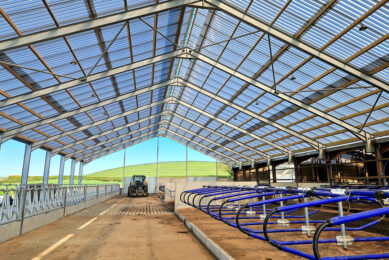What will the future dairy barn offer?
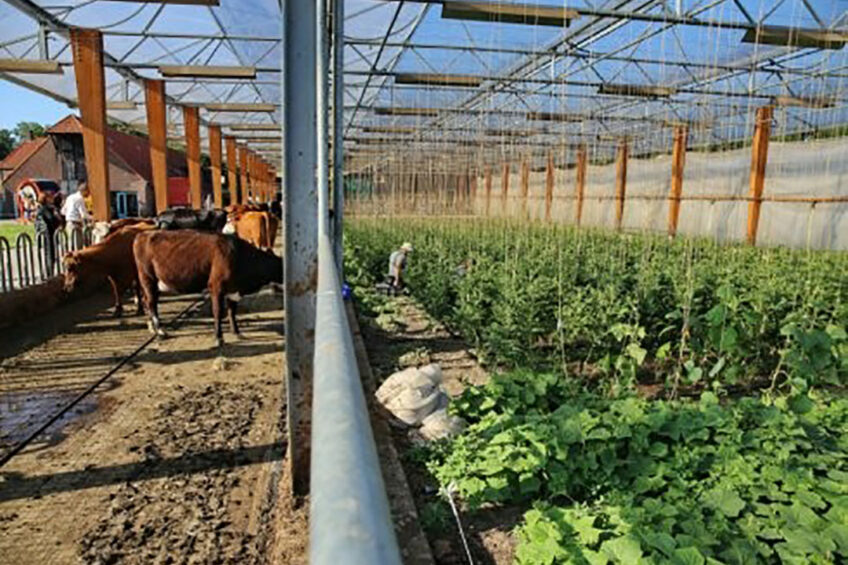
The majority of cows live in barns whose design has barely been updated over the last fifty years; the cubicle stable. But what are the latest trends and developments that will shape the cow barn of the future? Researchers recently looked at which factors will play a major role in the future barn.
Dairy barns of the future will likely focus on natural cow behaviour, climate control, reducing emissions, re-using waste streams, manure quality and capital efficiency. An international team of scientists of, among others, Wageningen Livestock Research, has mapped the possibilities. Paul Galama, of Wageningen Livestock Research, headed the investigation.
The factors mentioned above, including cow behaviour, re-using waste streams and reducing emissions are mutually dependent. That is why it is essential to balance the different issues, scientists say. A larger barn is costlier, has a more significant impact on the environment and may cause increased emissions. Freestall barns appear to enhance the well-being of animals by offering them plenty of space, as well as having lower ammonia emissions and increasing the cows life-span.

Multifunctional space
Galama explains that the primary criterion is: how much space do I wish to offer my cattle (see figure above). In a free-stall dairy, the cow has approximately four times as much room to lie down as in a cubicle barn. If the cows are put to pasture fulltime, this space may even be used for horticulture, or for keeping pigs or poultry—a multifunctional building.
A second criterion is what organic fertilisers are suited to the farm. Floors that separate manure into faeces and urine and a cow toilet allow for lower emissions and more precise fertilisation of pastures and arable land. Freewalk barns with wood chips, sawdust, elephant grass or seagrass as bedding allow for the production of manure with a high level of organic content.

What is next?
The main challenge is to view the barn as an integral part of the entrepreneurial system. After all, the barn impacts the entire operation and manure chain of the barn, storage and use. It must fit within the view on nature management, closing cycles, precision agriculture and the value adhered to it by society. There are still numerous technical issues to be overcome. For example, low-emission flooring, manure removal and storage, alternative freewalk bedding, sustainable building materials, flaring of methane gas or floating barns with optimal usage of waste streams from nearby urban areas.
Galama considers the ‘multi climate’ building an interesting challenge. This is a sketch by architect Sprecher that requires further analysis. The idea is based on capturing the air released in the freewalk barn, cubicle barn or manure basements, and blowing this through the bedding in the freewalk area. Thus, the freewalk area is used as a biofilter.
 How to ensure lighting is sufficient How to ensure lighting is sufficientCows are sensitive when it comes to the amount of light in a barn and are daytime creatures, therefore when it comes to lighting it is important to get it right. Consider these points… |
The researchers believe that combining barn systems and innovations is the way forward. ‘There are already many techniques available to reduce emissions in existing barns’, Galama states. ‘More physical space for natural animal behaviour is a win-win for both farmers and animals, we expect.’
In their publication, the researchers extensively discuss the differences, advantages and disadvantages of different barn designs. The research was funded by the European Unions Horizon 2020 programme and conducted from within the ERA-NET SusAn project www.freewalk.eu.
This is a summary of a paper by Galama, P. J., et al. “Symposium review: Future of housing for dairy cattle.” Journal of Dairy Science (2020).



